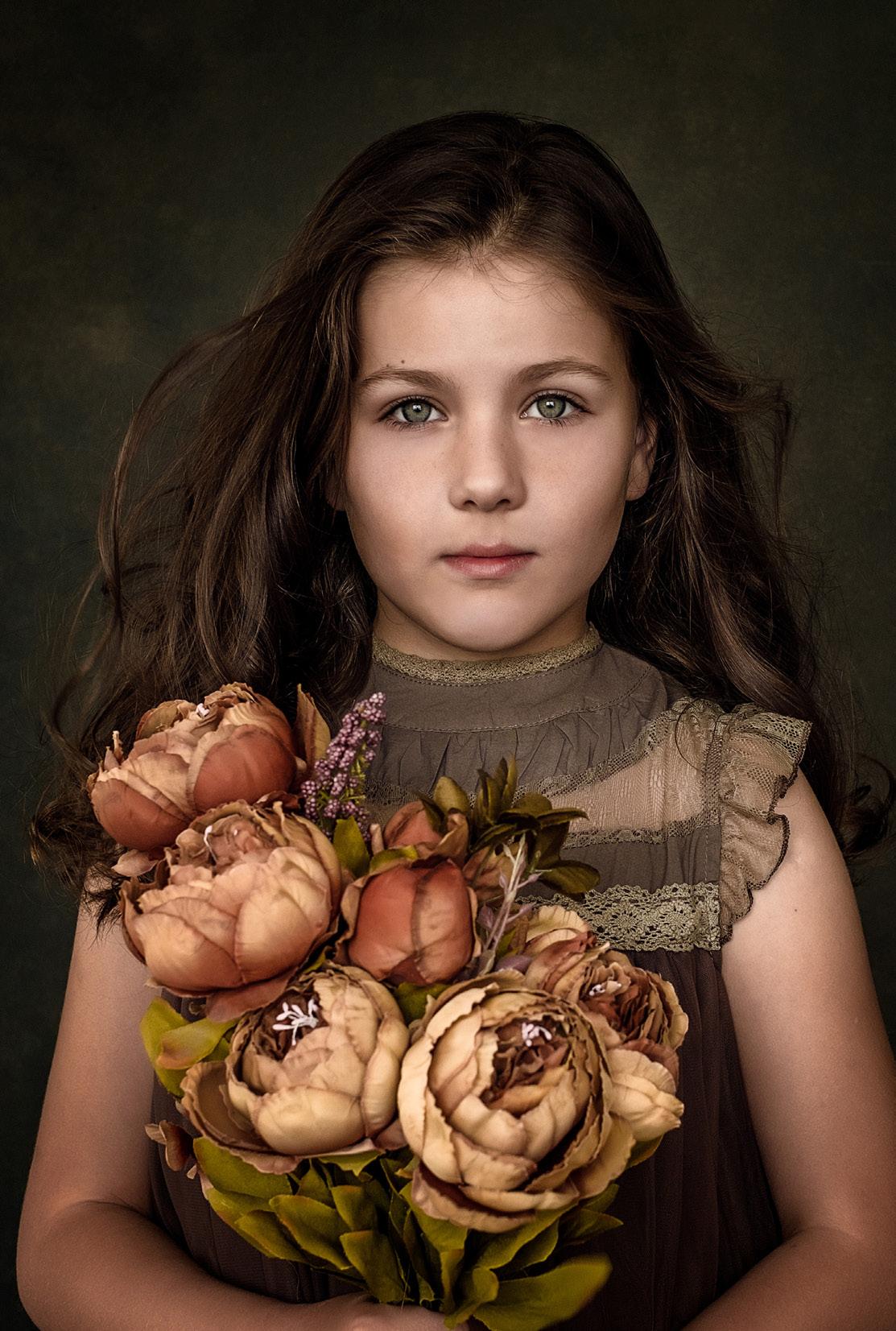
26 minute read
FUJILOVE INTERVIEW
Barbara INTERVIEW FUJILOVE Asboth
In the second of this month’s interviews, Stephanie Baxter is chatting to Barbara Asboth, a freelance professional photographer who, for the past seven years, has worked across multiple genres including street portraiture, weddings, fine art, lifestyle, editorial, headshots and events. She loves the challenge and variety that each subject as a unique human provides her with.
Advertisement
HEIRLOOM PORTRAIT COMMISSION
X-T2 + XF35mmF1.4 at f/4, 1/125 sec, ISO 200
Barbara, welcome to FujiLove! Can you tell us a little bit about who you are and what you do?
Hi and thank you for this opportunity! I’ve been a big fan of Fujifilm for years, so being featured in FujiLove Magazine is a minor fangirl dream come true. Who I am is, first and foremost, a huge introvert and a very sensitive person. Those can be seen as negatives traits in many careers, but I find that it helps me a lot with my photography. I like to sometimes say I’m a ‘people-ographer’ – my work is all about people, regardless of genre.
I thrive on versatility but mainly photograph branding, headshots, heirloom portraits, weddings and street portraits. I was born in Hungary and raised there, plus the UK, France and the Netherlands. I’ve also lived in Japan. I think that those experiences of having to observe, fit in and identify with many different cultures have given me the adaptability and open mind that I need to connect with my subjects and create a portrait that reflects well on them.
I also run a design business alongside my photography, both because it exercises my creativity in a different way, and also because in these uncertain times for small businesses it gives me peace of mind to have a backup option.

FAMILY PORTRAIT COMMISSION
X-T3 + XF16-55mmF2.8 at f/2.8, 1/250 sec, ISO 500
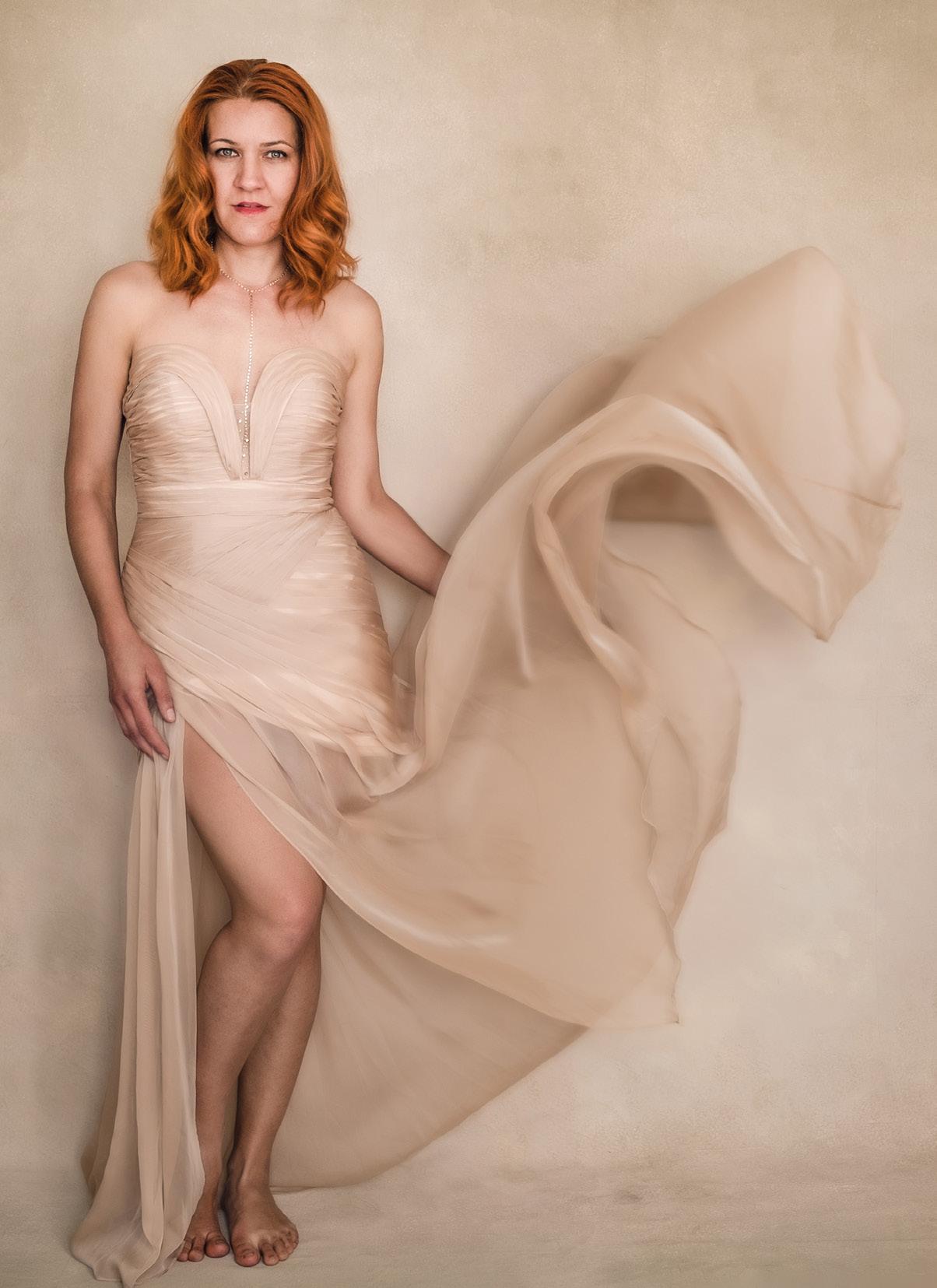
How did you first get into photography and how have you got to where you are now?
The cheesy but true answer is that I was always drawn to the visual arts. I enjoyed taking photos, but in my teens I spent most of my time on fine art and illustration, even planning to study art or design at university. In the end (long story!), I ended up studying Japanese instead, and arts were shelved.
A few years later, looking for something to keep my creativity alive during a difficult year in my personal life and a job I hated, I picked my old entry level Canon DSLR back up. I knew I wanted to photograph people, but I didn’t know how. I joined Flickr for some inspiration and found a group called ‘100 Strangers’. The aim was to commit to approaching 100 strangers on the street as a learning project, to ask about the person, chat to them and capture a portrait. It started a couple of years before ‘Humans of New York’, which popularised the format (back then there wasn’t anything like it), and I found the premise absolutely fascinating. I thought it would be a great way to work on my social skills, not just on my photography and step outside my comfort zone. I connected with many other photographers around the world doing the project and sharing our photos, giving critique and helpful advice, it was a wonderful escape for me. I fell in love with street portraits and have taken hundreds since then, leading to a book!
While I was still learning the ropes, I put up some Gumtree adverts looking for young women willing to do a TF shoot with me, so I could practise more ideas. I got a surprising number of volunteers! Nobody was a professional model, so I had to learn (and learn fast!) how to take photos of anyone in a flattering way. Eventually I had someone approach me with a small job off the back of one of these TF shoots, and paid work built up from there!
As my responsibilities grew with paid work, I focused on development even more. I bought many Creative Live courses to learn from the best in the industry, read books, browsed forums, and connected with other photographers to support and learn from each other.
The experience made me realise how much I love to be creative, so I left my office job, did a Masters in web design and worked as a photographer alongside it. I’ve been doing that for six years now and it was absolutely the best decision I could’ve made.
You shoot a few different photographic genres. What would you say are the unifying elements to your images across those different genres? Is this something you actively pursue or does it tend to happen naturally?
It’s a mix of what comes naturally and what I actively aim for. I like a certain consistency to my editing so that clients know what they’re signing up for, and also because I prefer a certain look, with reasonably high contrast, and warm tones. What comes more naturally is how I always try to show the subject looking as authentic as possible, even in studio work. It’s the reason I never delved deeper into fashion and conceptual photography; for me to feel inspired, the photos need to be about the subject and what I can bring out in them, not about the subject as an accessory to an unrelated idea. Even in event work, genuinely emotive moments between participants are what I look for when pressing the shutter.
I also hope that my love for observing people shows through in all my work, putting their personality and not my own at the forefront. That’s what I try to do with every photo I take.
What Fujifilm gear do you have in your kit and how has it served your needs as a photographer?
I currently have an X-T2 and X-T3, with the XF14mmF2.8, XF35mmF.4, XF50mmF2, XF16-55mmF2.8 and XF50-140mmF2.8 lenses. These cover all eventualities across any genre I might come across.
I usually use the zooms at weddings and events, and the primes for portraits.
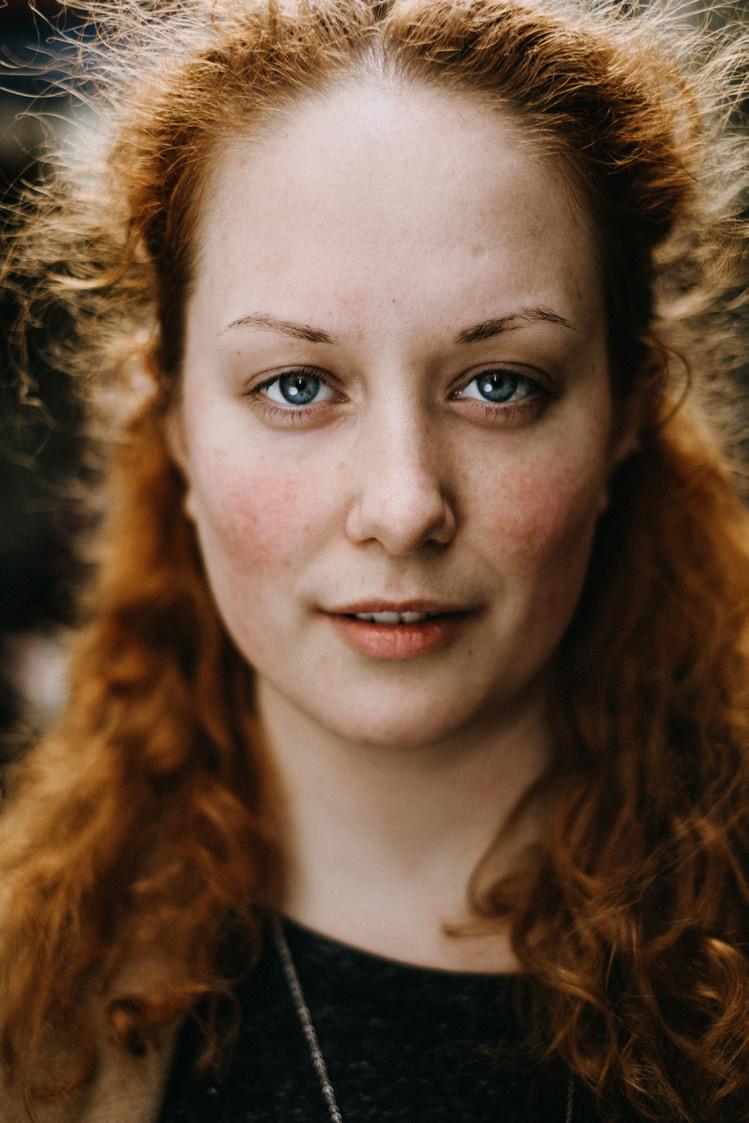
STREET PORTRAIT – LILY
X-T2 + XF35mmF1.4 at f/1.4, 1/1000 sec, ISO 320
I also still have my X-T10. My gateway drug to Fujifilm was one of the X100 models, but the battery life and fixed focal length didn’t work for my portrait work so the X-T10 was what really sold me on the brand. I decided to go all-in with Fujifilm (from a dual Canon setup and their heavy L lenses) once the X-T2 came out and, after some testing, I was satisfied that it was good enough for client work. I needed to save my back since after a wedding I was always wiped out from the pain of using my Canons!
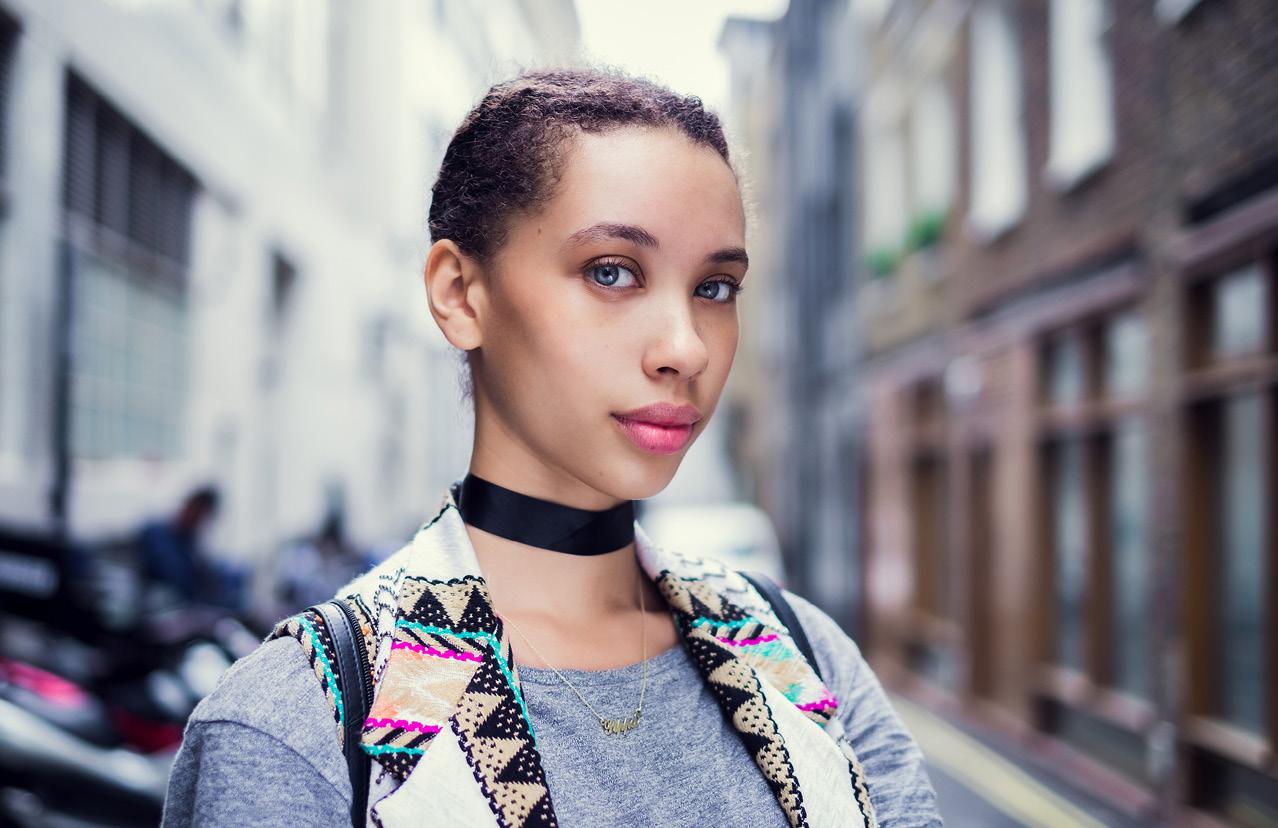
STREET PORTRAIT – PIPPA
X-T10 + XF35mmF1.4 at f/1.6, 1/500 sec, ISO 200
I am absolutely not a pixel peeper, so the in-depth discussions about noise levels, sensor sizes and such aren’t a factor for me at this stage. For me it’s all about the moment, the light and the expression, and all of those are independent of the gear I use. My clients have never complained about anything in that area either.
I find there’s a certain delight in using Fujifilm cameras as well that I haven’t experienced with other brands. I can’t really explain what it is, but I’ve heard others say that, too. They feel tactile and well-made, with an aesthetic that is stylish without looking too retro. Plus, the XF35mmF1.4 has a quality to it that just fits my portrait aesthetic really well.
I know that you’ve had your work shown in various exhibitions. How did those opportunities come about and what has the experience been like for you?
The first one I was involved in was ‘Atlas of Humanity’, a touring exhibition showcasing the beautiful diversity of people across the world. That idea is what my street photography in particular was all about, so I was delighted and honoured when the curator, Martin Vegas, asked to exhibit two of my portraits having found my work on Flickr. It was shown in Cologne, Birmingham and New York before I managed to attend the Paris exhibition in the Marais district last year, which was a very humbling experience indeed. Jimmy Nelson was a guest speaker at the opening event and I got the opportunity to ask him a few questions myself!
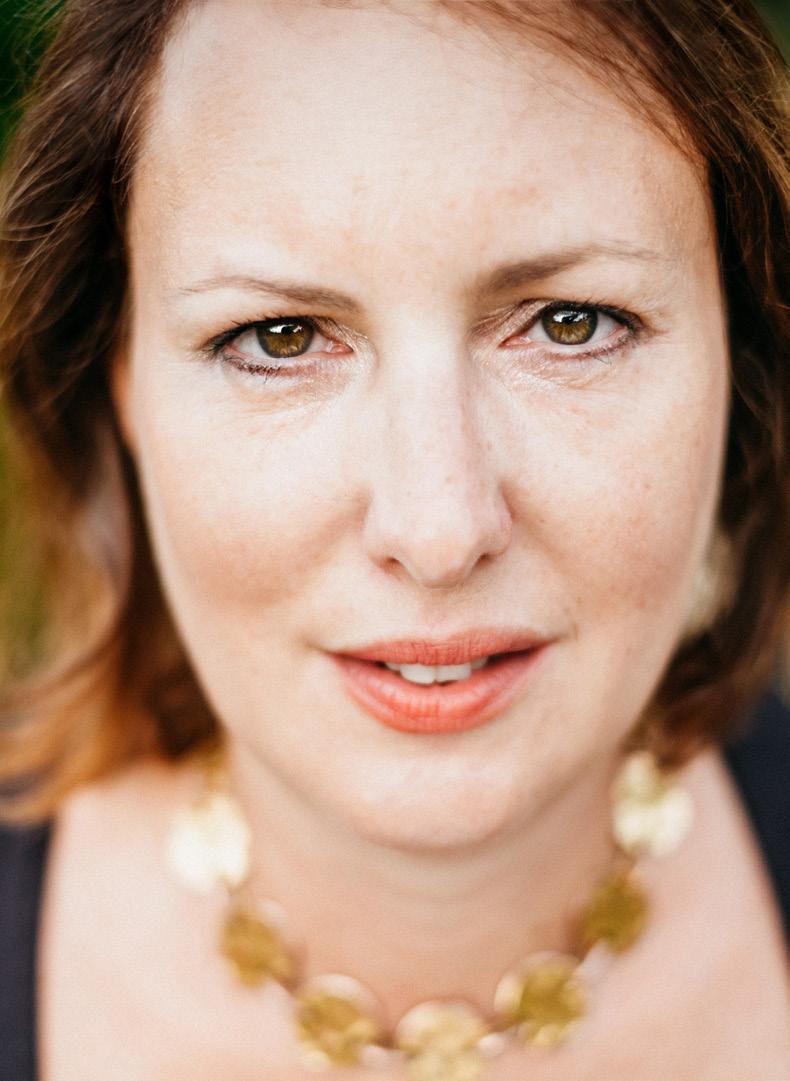
VICTORIA PRENTIS, MP FOR BANBURY
X-T2 + XF35mmF1.4 at f/1.4, 1/2000 sec, ISO 250
The second exhibition I was a part of was ‘209 Women’, a collective project to mark 100 years since some women achieved the right to vote and highlight the role of women in two of our historically male-dominated industries. We took over the corridors of Portcullis House in Parliament with 209 portraits of all the sitting female MPs at the time, shot exclusively by female photographers. It garnered press attention and went on to be exhibited in Liverpool at the Open Eye Gallery as well as being published as a book, supported by arts grants and crowdfunding. To be a part of that, I had to submit a written application with a sample of my work to the curatorial team, which involved Hilary Wood, Cheryl Newman and Lisa Tse, with the support of MP Alison McGovern. My local MP was incidentally a woman, too, so it was straightforward that I would photograph her. She was extremely busy and so was I, but we managed to schedule a half hour or so with her at her home, and we took her photo in her garden just as the sun was beginning to set.

FACES OF SHOREDITCH – NAS
X-T10 + XF35mmF1.4 at f/1.4, 1/500 sec, ISO 320
I’d love to hear more about your book, Faces of Shoreditch. Could you walk us through the process of its creation, from how the idea for it came about to after it was published?
You may be surprised to hear that one is also off the back of Flickr! (They should really pay me some commission for all these mentions...!) The editor, from the family run publisher Amberley Books, found my ‘100 Strangers’ photos on there (I was well past 100 by the time) and asked if I would be interested in releasing a book with them. The publisher is a local history specialist, so their idea was for me to choose an area of London and capture a mix of local figures, including random street portraits and portraits of business owners, residents and workers. I had around a year to finish it, but I was working full-time so it wasn’t as luxurious as it sounds! I walked well over 100 miles in Shoreditch looking for potential subjects and backgrounds. I recorded many hours of interviews, spent time with people in their homes, heard many meaningful or funny stories, and in the end I ended up with a great range of characters from the area’s colourful past and present.
The format was difficult for me in that in several cases I spent over an hour with a person, connecting with them, and then I had to choose just one photo of them, with just a short snippet of their interview (due to the page number limit). Quite a few of the people would’ve warranted a whole chapter of their own, such as the local vicar with a life story that could’ve been a TV series, or the co-founder of a strippers’ collective and her in-depth discussion on the politics of stripping, among others. I’d like to release some of the full transcripts as blogs posts one day, with some more of the photos so all those stories don’t get lost.
I did feel slightly burnt out after the book came out, to be honest. As much as you love doing something, if you have to do it on someone else’s timeline, it can get too much and inhibit your enjoyment of the process. I took a break and then continued to take street portraits just for fun for a while. I moved out of London a couple of years ago to Banbury, a small town in Oxfordshire, and have started a ‘Faces of Banbury’ series in a similar vein, but just for myself. I want to get to know more of the local residents and feel more connected to this area I otherwise don’t have any connection to on my own timeline. If anything comes of it eventually, then great, but I’m not pushing it at the moment.
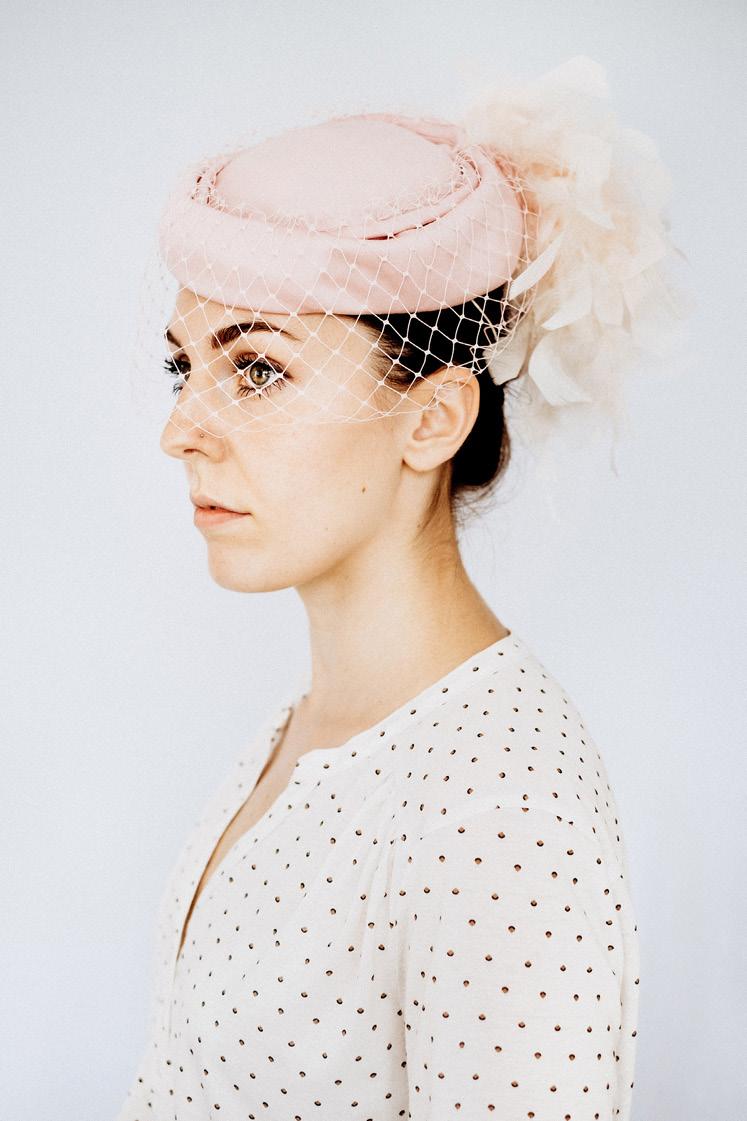
FACES OF BANBURY – LAURA
X-T3 + XF35mmF1.4 at f/2, 1/250 sec, ISO 400
Do you have any other projects currently in progress?
There is actually a self-initiated project I started after ‘Faces of Shoreditch’ called ‘One in 17’, which refers to the number of people living with a rare disease in the UK. The format is for me to spend a day with each subject and document their reality living with their illness through a photo essay. I had photographed quite a few conferences and events for rare disease charities over the years, and I wanted to do something to raise awareness of life with these diseases, especially some ‘invisible’ illnesses like Ehlers-Danlos Syndrome or Ataxia. I covered one session before I found out I was pregnant, however, and I did three more after that but eventually I physically couldn’t continue. Once my son was old enough for me to leave him again, COVID happened, so the project is unfortunately on hold but I hope to pick it back up once we can resume normality! Meanwhile, the photos I took are freely available for editorial use by any related rare disease charity or nonprofit, and some have used them for their publications already, so I’m glad I could help in some way at least. The photos are available here for those interested.
BARBARA ASBOTH
RICO’S QUICK TIPS
Each month, Rico Pfirstinger brings us his quick tips to answer your most-asked questions related to Fujifilm gear.
QUICK TIP AF-S RELEASE PRIORITY 1
ISSUES – RELOADED
Scanning through forums, I found new complaints about autofocus problems, especially in concert with slow-focusing lenses like the XF56mmF1.2. Let me remind you that these issues are most likely related to Fujifilm secretly changing its logic behind the AF-S Release Priority setting in the X-T4, X-S10 and X-T3 (with firmware 4). You can read more about this important issue in the November 2020 edition of this Quick Tips column.
Today, I’d like to expand on this topic by bringing Fujifilm’s Camera Remote app into play. As you probably know, the app features a Bluetooth-based remote trigger which does not allow you to properly half-press the app’s simulated shutter release button. It’s all or nothing, basically emulating the shutter mash technique I also described to you last month.
This behaviour can be problematic in concert with an AF-S Release Priority setting: the camera can’t properly autofocus when it is remotely released via the app. So please set your camera to AF-S Focus Priority and also make sure that AF+MF is set to OFF. This ensures that when you trigger the camera via the app, it will finish and confirm the autofocus run before taking the shot.
Once again, these are my recommended settings to avoid autofocusing problems in AF-S mode: • AF/MF SETTING > AF+MF > OFF • AF/MF SETTING > RELEASE/FOCUS PRIORITY > AF-S PRIORITY SELECTION > FOCUS
QUICK TIP 2
MIC / REMOTE RELEASE MISMATCH ISSUES
Let’s have a look at another potential issue with some recent X camera models: connecting an accessory that doesn’t match the camera’s MOVIE SETTING > MIC/REMOTE RELEASE setting. As you may know, X cameras like the X-S10, X-Pro3 and X100V have a multi-function port (ø 2.5mm or 3.5mm) that can be used to connect either a microphone or a remote release. The MIC/REMOTE RELEASE setting tells the camera which accessory type (microphone or remote release) is currently connected, and as long as the connected accessory matches the camera setting, all is well.
However, if there’s a mismatch, issues arise in concert with AUTO POWER OFF. Connecting a remote release and setting the camera menu to MIC leads to IBIS movement when (after AUTO POWER OFF) the X-S10 is woken up by halfpressing the shutter button on the remote release. And connecting a microphone and setting the camera

Fig. 1: Using the Fujifilm Camera Remote app to trigger a shot via Bluetooth, it’s important to make sure that the camera is set to AF-S Focus Priority and that AF+MF is OFF. Otherwise, it won’t autofocus properly, and your subject may end up being out of focus.
menu to REMOTE leads to the camera turning on and off repeatedly. This latter behaviour applies not only to the X-S10, but also to the X-Pro3 and X100V. With the X-S10, there’s an additional quirk: connecting a microphone and setting the camera menu to MIC (which is perfectly correct) leads to a continuous IBIS movement after AUTO POWER OFF. This is, of course, a bug. Luckily, you can get it rid of it by updating your X-S10 to firmware 1.01, which was released on 19th November. As for the strange behaviour in case of an actual accessory/menu mismatch, well...we still have to live with that.
QUICK TIP X-S10: SUGGESTED 3 FUNCTION BUTTON
ASSIGNMENT
As you may know from my October article in the FujiLove Gear Talk supplement, the X-S10 is somewhat a blend between an X-T30 and an X-T4, but with a ‘PASM and unmarked dials’ user interface that has its roots in Fujifilm’s X-S1 superzoom bridge camera from 2012, hence the name X-S10.
For me, the main user interface issue of the X-S10 are its function dials. The camera has three of them (front, rear and top left), and neither can be pressed. This means that you cannot press a dial to use it as an Fn button or to change the dial’s mode.
This is a big difference compared to other models like the X-T4 or X-T3, where you can press the front command dial to change the parameter it controls,
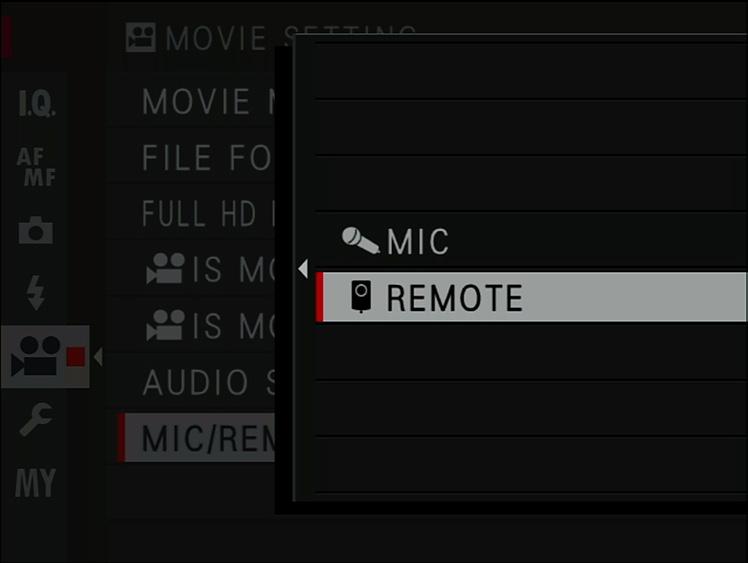
Fig. 2: Always make sure that your MOVIE SETTING > MIC/REMOTE RELEASE setting matches the accessory that is connected to the camera.
and where you can press the rear command dual to enable the magnifier tool (or assign any other Fn button option), reset the focus frame to its default size or (in MF mode) switch the manual focus assistant type with a long press. We can’t even format the SD card by pressing and holding the trash button for a few seconds and then pressing the rear command dial while still holding the trash button. Instead, we have to go to the regular SET UP > USER SETTING > FORMAT menu.
Since this convenient functionality is lost in the X-S10, we have to find a workaround if we want to use that otherwise great camera in ways that are familiar from other X camera models. The X-S10 offers ten user-configurable Fn and Touch-Fn buttons and a configurable Fn dial (Fn-D). We can also configure the behaviour of the focus stick and the touchscreen. By combining these options, we can rescue much of the functionality that has been lost.
To configure the Fn buttons, press and hold the DISP/BACK button until the configuration screen appears. Here are my recommended settings: • REC: FACE DETECTION ON/OFF. The X-S10 combines face detection and face select in one function, and I like to quickly switch face detection on and off with the REC button that is located next to the shutter release button. With this setting, I can still start and stop video recording with the shutter button in MOVIE mode, so in my opinion,
Fig. 3: These screenshots show the Fn button assignment of my X-S10. To quickly access this configuration screen, press and hold the DISP/BACK button.
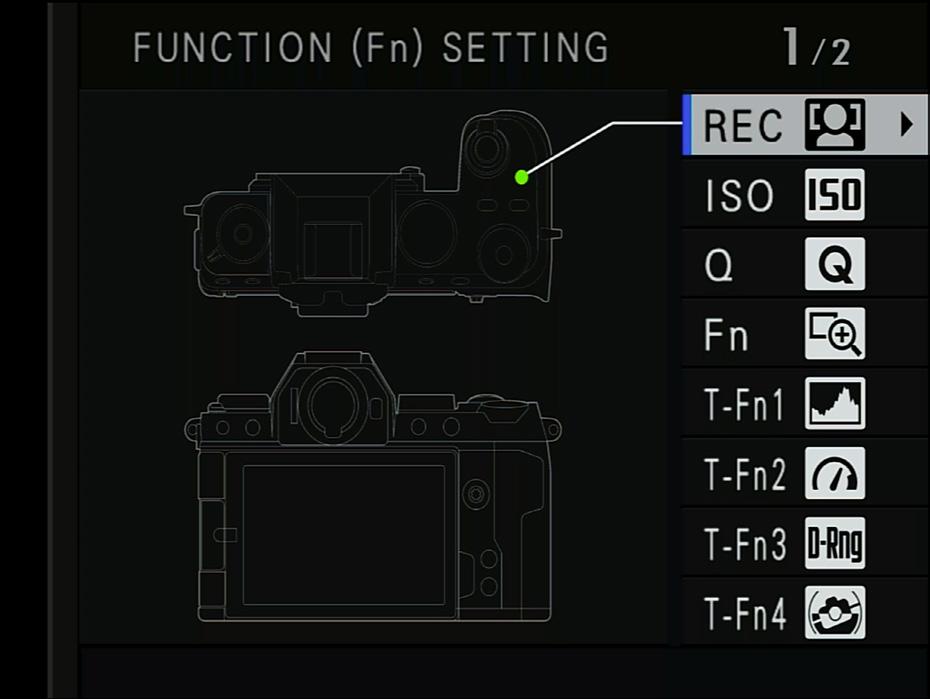
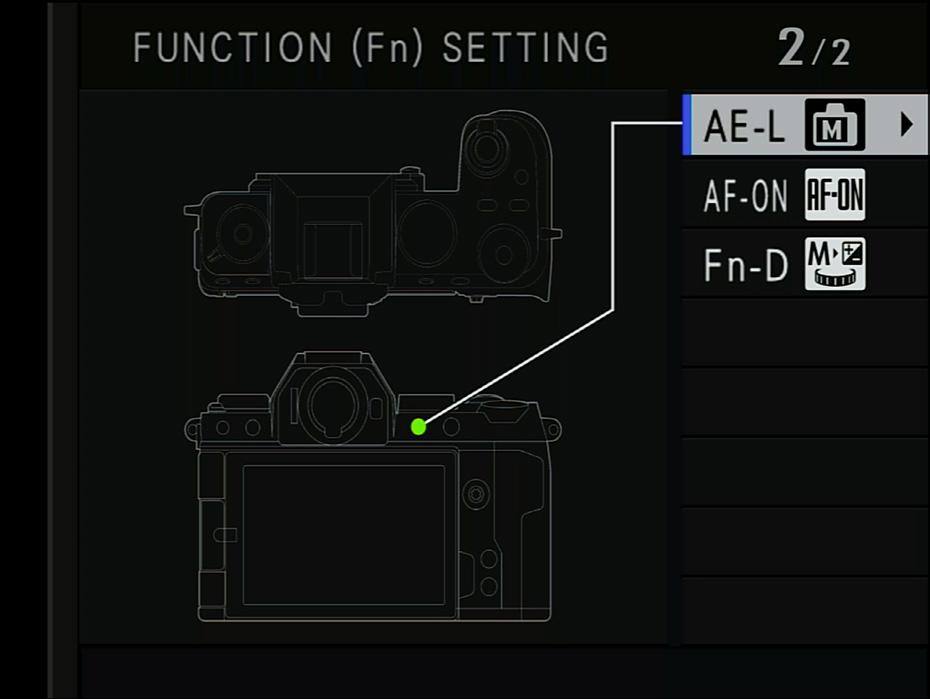
nothing is lost. • ISO: ISO. There’s no need to change the assignment of the ISO button. • Q: QUICK MENU. The same applies to the Q button that grants direct access to the Quick Menu. • Fn: FOCUS CHECK. “Fn” is the only genuine (as in unmarked) Fn button of the X-S10. All the other Fn buttons already carry pre-assigned markings. I use this button to quickly access the magnifier tool for the EVF and LCD. Alternatively, you might want to assign VIEW MODE to this button. In this case, you can still magnify the live view by double-tapping on the touchscreen. Just make sure that the touchscreen and double tapping are both enabled. Also make sure that you have defined a suitable EVF TOUCH SCREEN AREA SETTING. • T-Fn1: HISTOGRAM. Flicking upward on the touchscreen displays the RGB histogram with overexposure warnings (“blinkies”). To use Touch-Fn gestures, make sure to enable the touchscreen and to set T-Fn TOUCH FUNCTION to ON in the SET UP > BUTTON/DIAL SETTING > TOUCH SCREEN SETTING
menu. • T-Fn2: PERFORMANCE. Flicking left cycles the camera through its various performance settings, including three different Boost mode options. • T-Fn3: DYNAMIC RANGE. It’s a good idea to put the DR function on a Fn or T-Fn button, because only then is it displayed as a transparent menu that allows you to immediately see the simulated effect of your DR settings adjustments (DR100%, DR200%, DR400%) in the live view. Accessing it via the regular IMAGE QUALITY SETTING menu, the DR function offers no transparent display, so you cannot immediately see the effect of your DR settings changes. You can, however, also adjust DR in the transparent Quick Menu, but this option isn’t as elegant and comfortable as using an Fn or T-Fn button. Flick to the right to access T-Fn3. • T-Fn4: ELECTRONIC LEVEL. Quickly switch the electronic 3D level on and off by flicking downward on the touchscreen. As usual, this works with the LCD and EVF, just make sure to define a suitable EVF TOUCH SCREEN AREA SETTING for use with the EVF. • AE-L: Most users will set this button to AE LOCK ONLY, but since I’m a dedicated manual exposure mode shooter, I always reconfigure this button to cycle between the PREVIEW EXP./WB IN MANUAL MODE options. • AF-ON: AF-ON. Enough said. Nothing to see here. • Fn-D: DEFAULT (+/– WHEN SET TO M). This specific setting for the Function Dial allows me to apply exposure compensation in “misomatic” mode (manual exposure mode M in concert with Auto-ISO).
To make everything work like we know it from previous X cameras, we also have to configure the focus stick in the SET UP > BUTTON/DIAL SETTING > FOCUS LEVER SETTING menu. Here are my settings: • PUSH > EDIT FOCUS AREA • TILT > DIRECT AF POINT SELECTION/ FACE SELECT
With these settings, the focus stick behaves almost like we know it from previous cameras. In face detection mode, we can use it to select a specific face when multiple faces are detected. www.fuji-x-secrets.net
BEING CANDID: PART 6
Welcome to part six and the final instalment of this series on the topic of candid photography. We’ve covered the core elements of light, composition and moment, along with storytelling. In this final part, I’ll talk to you about some of my favourite candid photographs, how I shot them and why I like them.
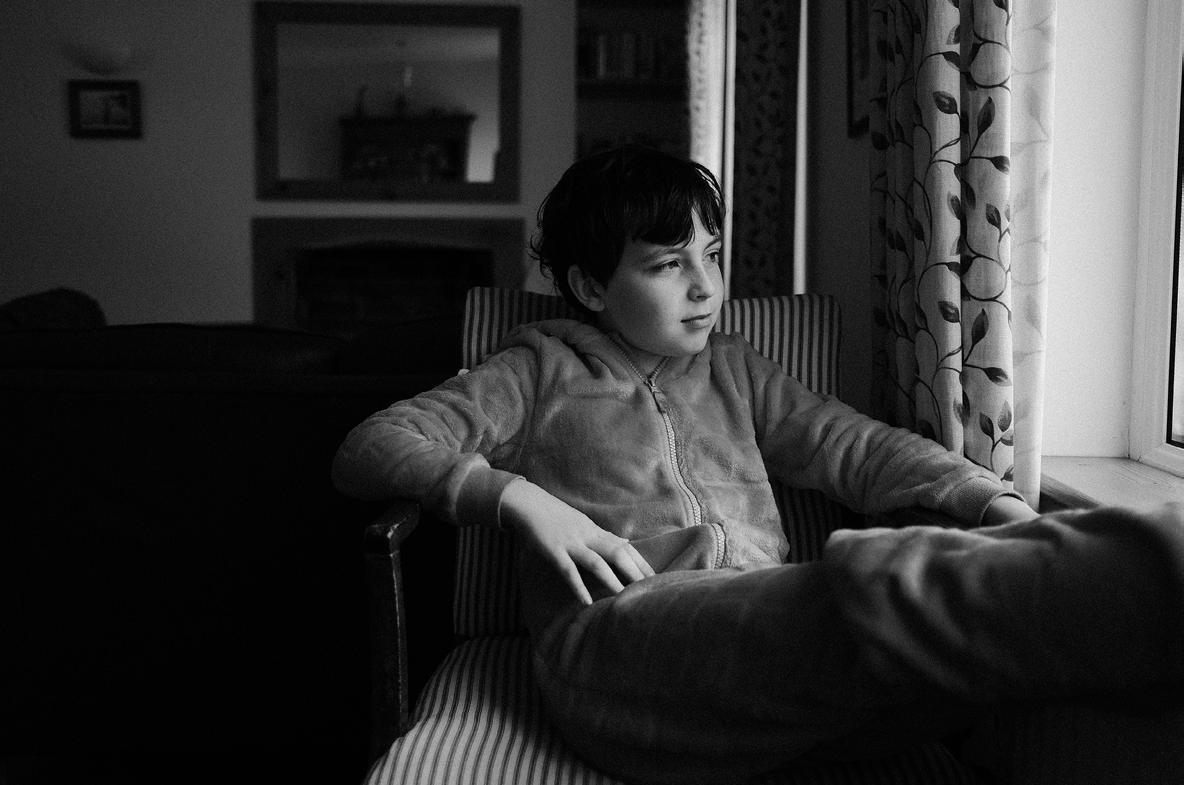
X100V at f/2, 1/125 sec, ISO 250 T his first image is of my little boy, Albie. I say ‘little boy’ but he’s growing up quickly and will be ten in a few months! The image is the last photograph I’ve taken as I write this. Before the second lockdown happened in the UK, we managed to get away to my home country of Wales for a few days.
This image, by the way, is a JPEG straight out of the camera. You’ll notice it has a lot of grain in it, and this is because I used one of my custom settings, Padilla. The setting is named after the legendary photojournalist Darcey Padilla. If you are interested, you can see how I build these JPEG custom settings in my recent YouTube video about the subject.
Remember, I have mentioned many times during this series about the combination of light, composition and moment. I encourage you to go back over previous issues if you haven’t read them already. I also discussed in detail what constitutes a moment and the ideology that a photograph doesn’t have to be good, it just needs to be important.
Looking at this next image, obviously from a wedding, I was struck by the conversation between the two mothers before the ceremony. Usually, the mothers sit on different sides of the room, but in this case there was time for a little catch-up and perhaps a comparison of wedding hats.
Once again, it’s about the light and the intriguing moment. As a wedding photographer, I don’t know these people, but I love observing moments like this.
For me, as a candid photographer, this tells me a lot more about the moment and the occasion than a simple head and shoulders shot of the two mums looking directly at the camera.
When I’m photographing events where I don’t know the subject, I love to look at the images later and wonder, “What were they talking about?”
X-Pro2 + XF56mmF1.2 at f/1.2, 1/160 sec, ISO 200


This next image was taken at one of Tokyo’s many flea markets whilst I was on a business trip there several years back. It was taken on the infamous Fujifilm X-M1 camera. The X-M1 was an excellent camera for its generation, but a range that Fujifilm never continued.
To shoot this photograph, I used the ‘from-the-hip’ method. I had preset my camera, and, whilst perusing the store, I took a picture with the camera somewhere between my chest and my hip.
I really love this photo, and it’s perhaps one of my favourites from my trips to the Land of the Rising Sun. I feel it captures the essence of the store, which was cluttered and chaotic in its stock, but it also captures the kind of majesty of the proprietor. I showed him the photograph after. Luckily, I had a Japanese person with me to translate and somehow we managed to have a little laugh and joke about the picture. I sent him a copy in the post. I hope it got there!
X-M1 + XF34mmF1.4 at f/1.8, 1/250 sec, ISO 400
This next image remains one of my favourites from my ‘Day in the Life’ sessions. Of course, this is the kind of photograph you can take at home at any time of the day.
What I particularly love about it is the normalness. There is a chaotic feel to the image, but it’s a very typical family candid photograph. We’ve got mum who is trying to get some medicine into the baby. At the same time, the elder child takes the opportunity to poach some cake mix directly from the tin. Dad, in the meantime, is in the background getting the dishes washed up.
I love this photo and, to me, it emphasises everything I have spoken about throughout this series. The idea of candid photography, though not voyeuristic, gives us a peek into the lives of others. But more than that, it’s a blueprint of the past for the generation to come. I hope this photograph is around when the little girl has her grandchildren. She can not only describe her family but the house, the surroundings and the furniture, all of which will change dramatically over the generations to come.
X-H1 + XF18mmF2 at f/1.8, 1/240 sec, ISO 200

This next image is perhaps more of a storytelling image. I photographed this using my trusty Fujifilm X70 at the Cheltenham Festival of Horse Racing a couple of years back. The tiny X70 is perfect for this kind of outdoor shot.
Much like the photograph of the Japanese gentleman in his emporium, this was taken from the hip. In this scene, the main subject has gone from jubilation that his horse was at the front of the pack, to frustration as it ended up losing.
This type of image works well as a series and beyond the scope of this article, the series was made using multiple shots. Again, it’s a photograph that in years to come will tell us a lot about clothes, people, environments, but not so much about the story as the previous one does.
X70 at f/2.8, 1/220 sec, ISO 200
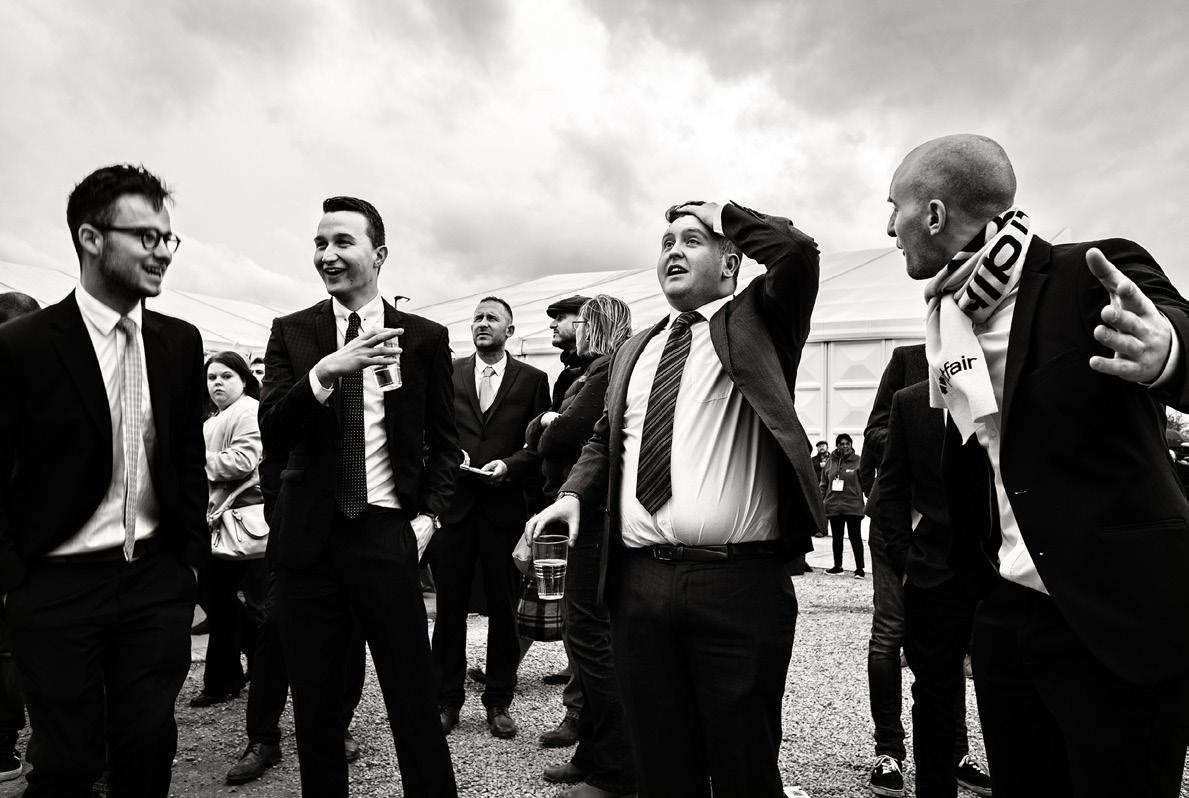

X100F at f/4, 1/15 sec, ISO 200
Back to the streets of Tokyo for another of my favourite candid street photographs.
This one was shot at the famous Shibuya crossing, a bustling part of the metropolis that is very popular with tourists.
For this series of images, I was trying to capture the local Japanese people, rather than the tourists. I think I’ve shared some these photographs before in this article series. It’s an incredible place, and if you can visit when the world resumes spinning correctly, I highly advise it.
This is one of the few photographs I’ve ever taken with the onboard flash of the Fujifilm X100 series. To capture it, I had preset the camera with a slow shutter speed and flash, waited in position and waited for people to pass me. It’s ironic now seeing the mask, of course. In Japan and much of Asia, maskwearing has been commonplace for a long time. It’s now the norm for us as well.
So, that brings me to the end of this series on candid photography. As a recap, I discussed the three core principles of shooting: 1. Light 2. Composition 3. Moment
All three of these parameters are essential for any photography; it doesn’t matter whether it is purely candid or a staged editorial photograph. In order for a photograph to be candid, however, it does need to be unstaged. This doesn’t mean that if you stage a picture, you can’t enjoy it, it just means that it’s no longer candid.
Later in the series, we talked about storytelling through photographs – the idea of beginning, middle and end, as well as the use of anchors in a story based on the five Ws: • Who • Why • What • Where • When
Remember, the most important thing is that you enjoy your photography. I very much enjoy my approach to candid documentary photography, but your style may be different. And that is fine, of course. It would be a boring world if we were all the same!
I hope you have enjoyed the series, and if you wish to keep in touch, please don’t hesitate to connect on any of my social media channels.
Happy snapping! Kevin




